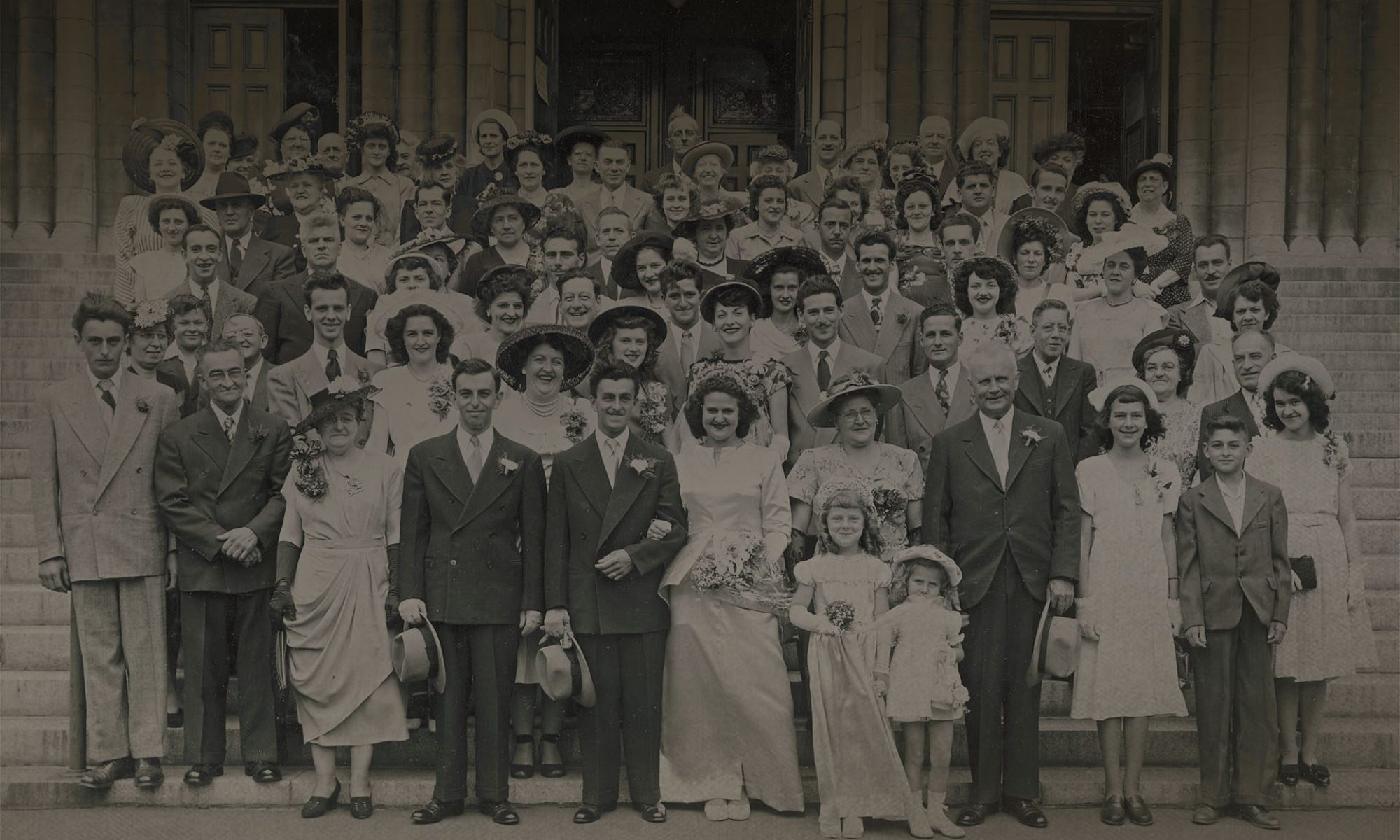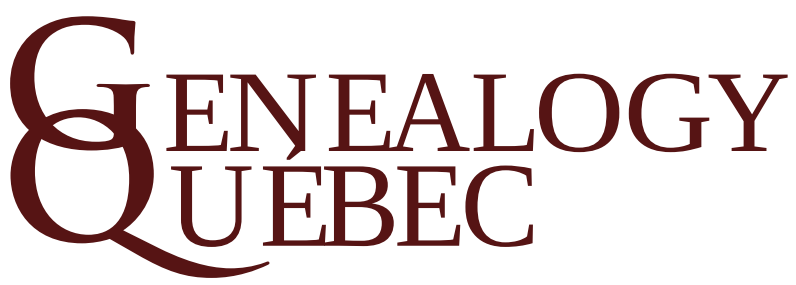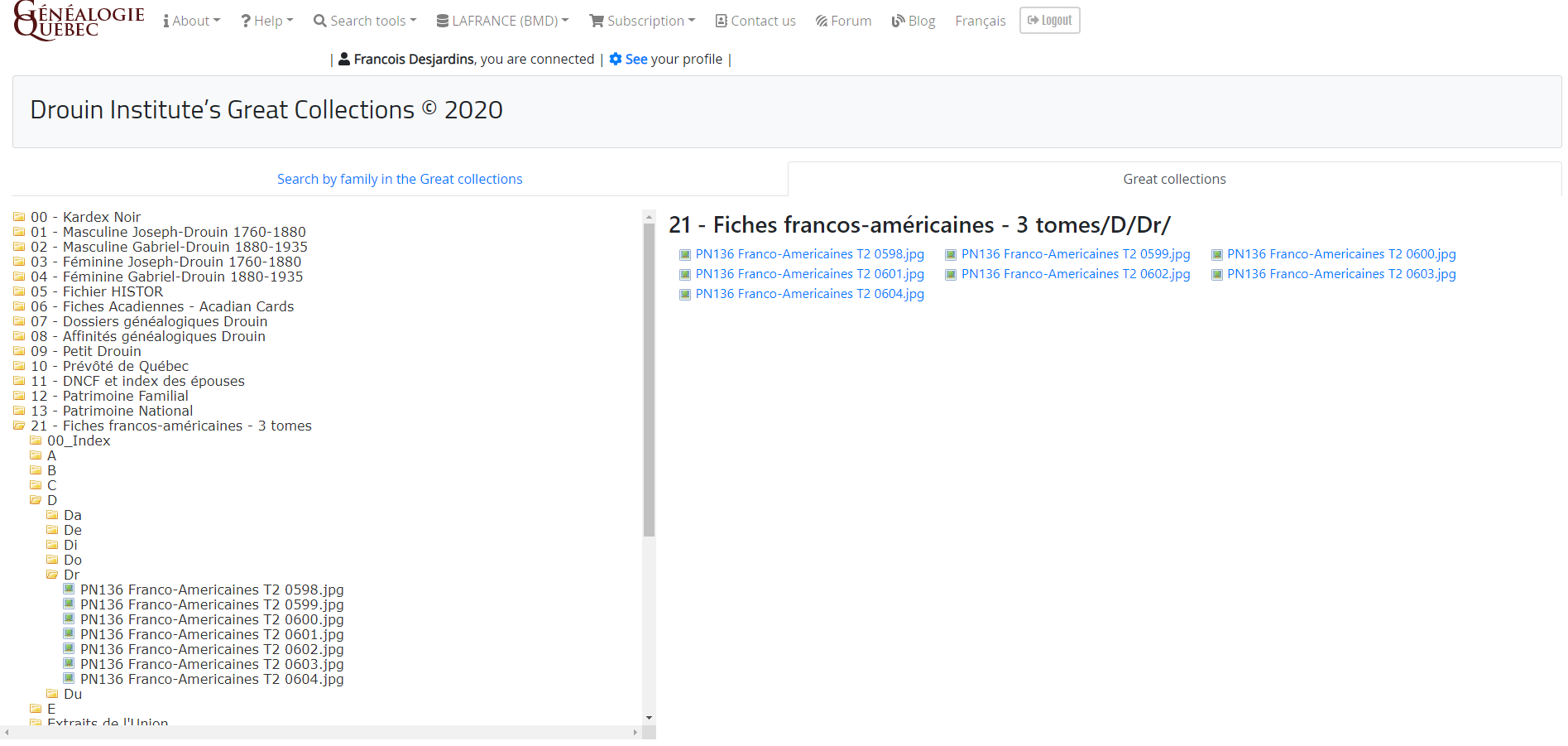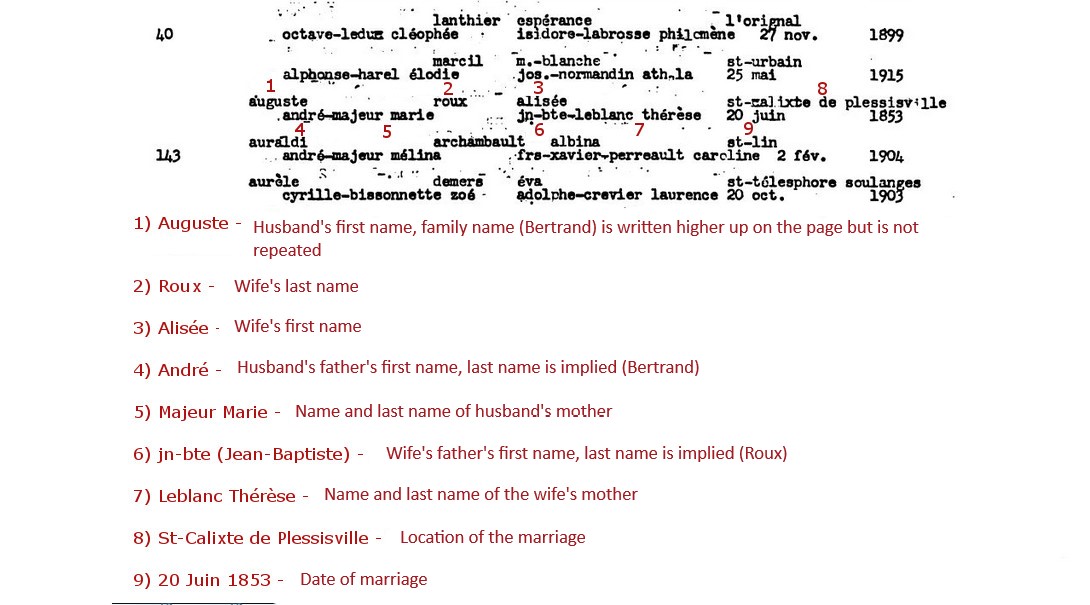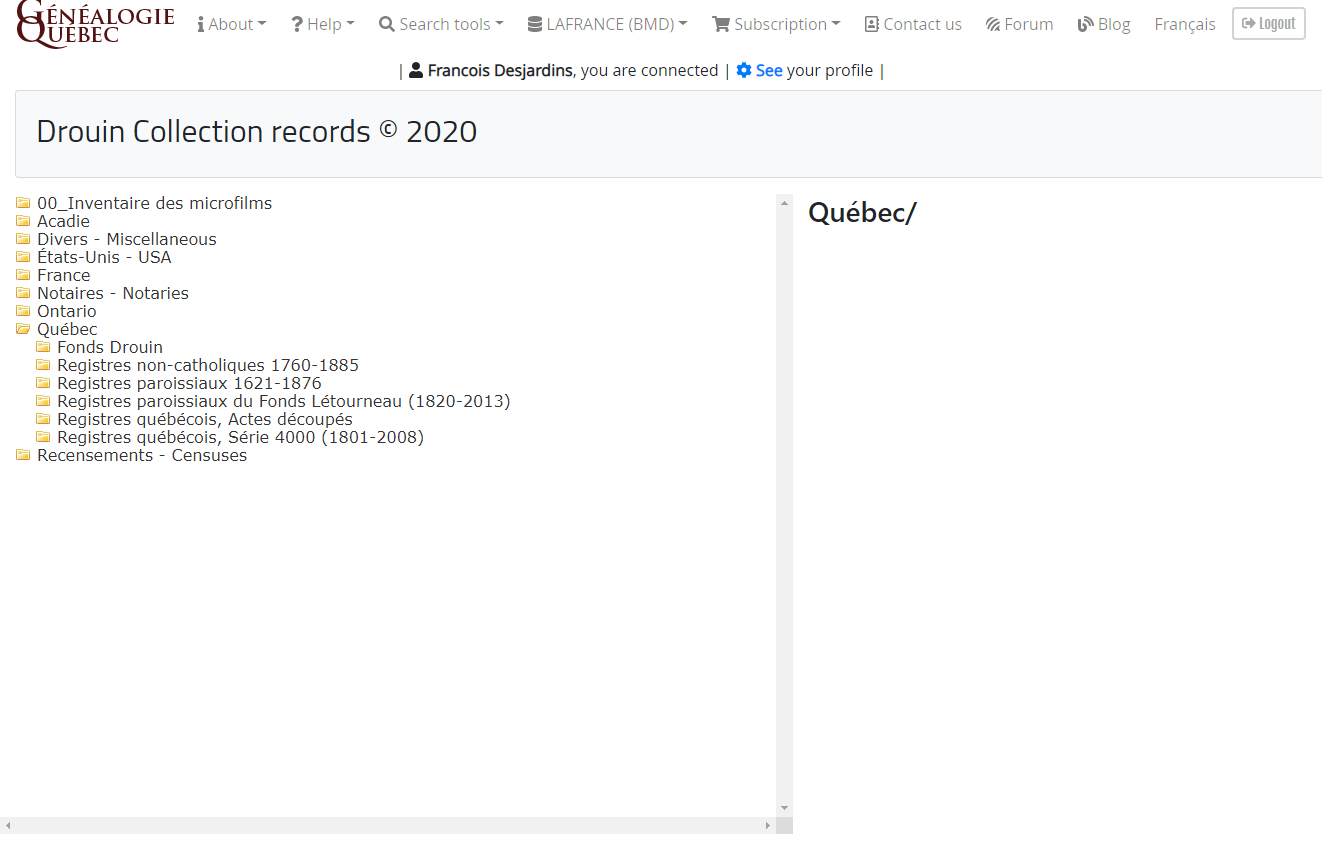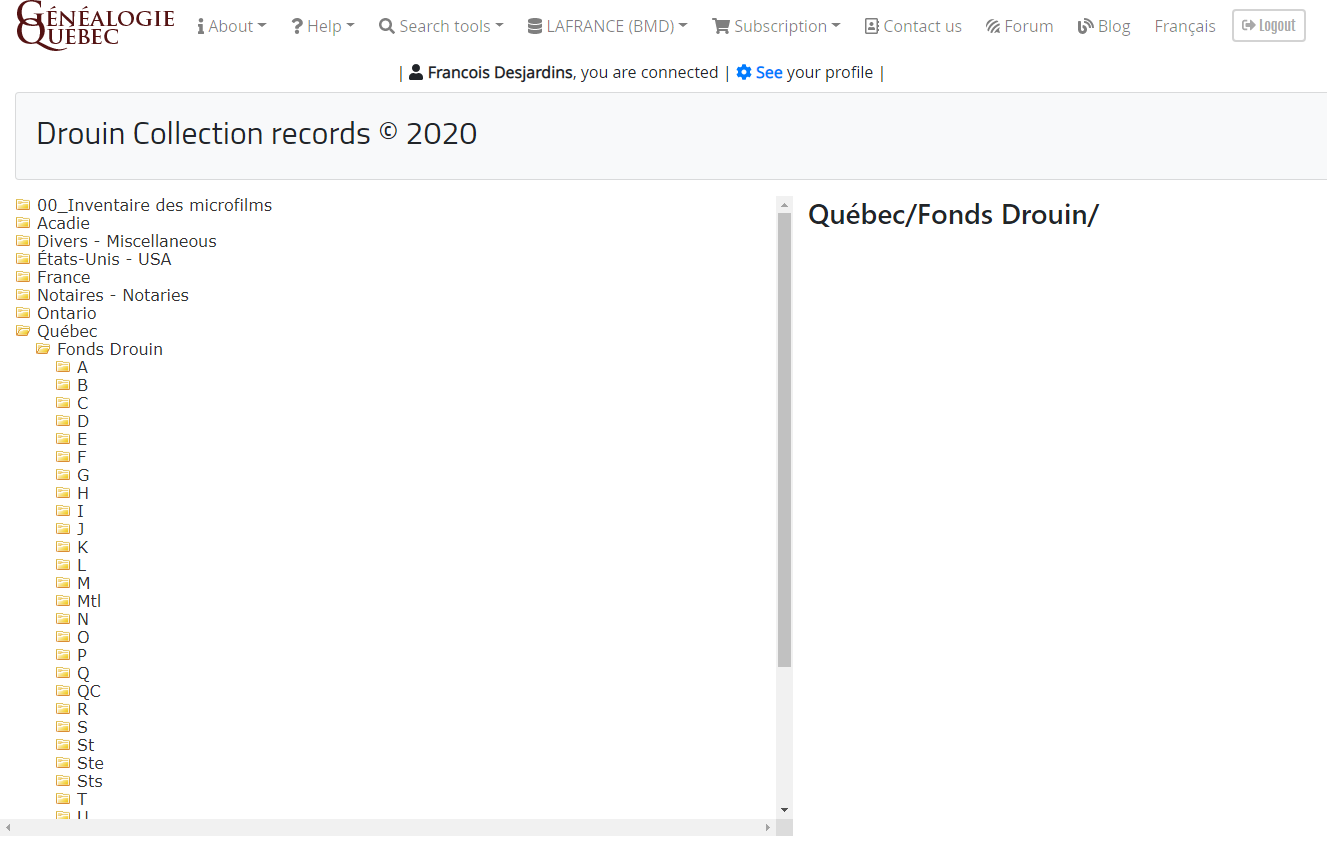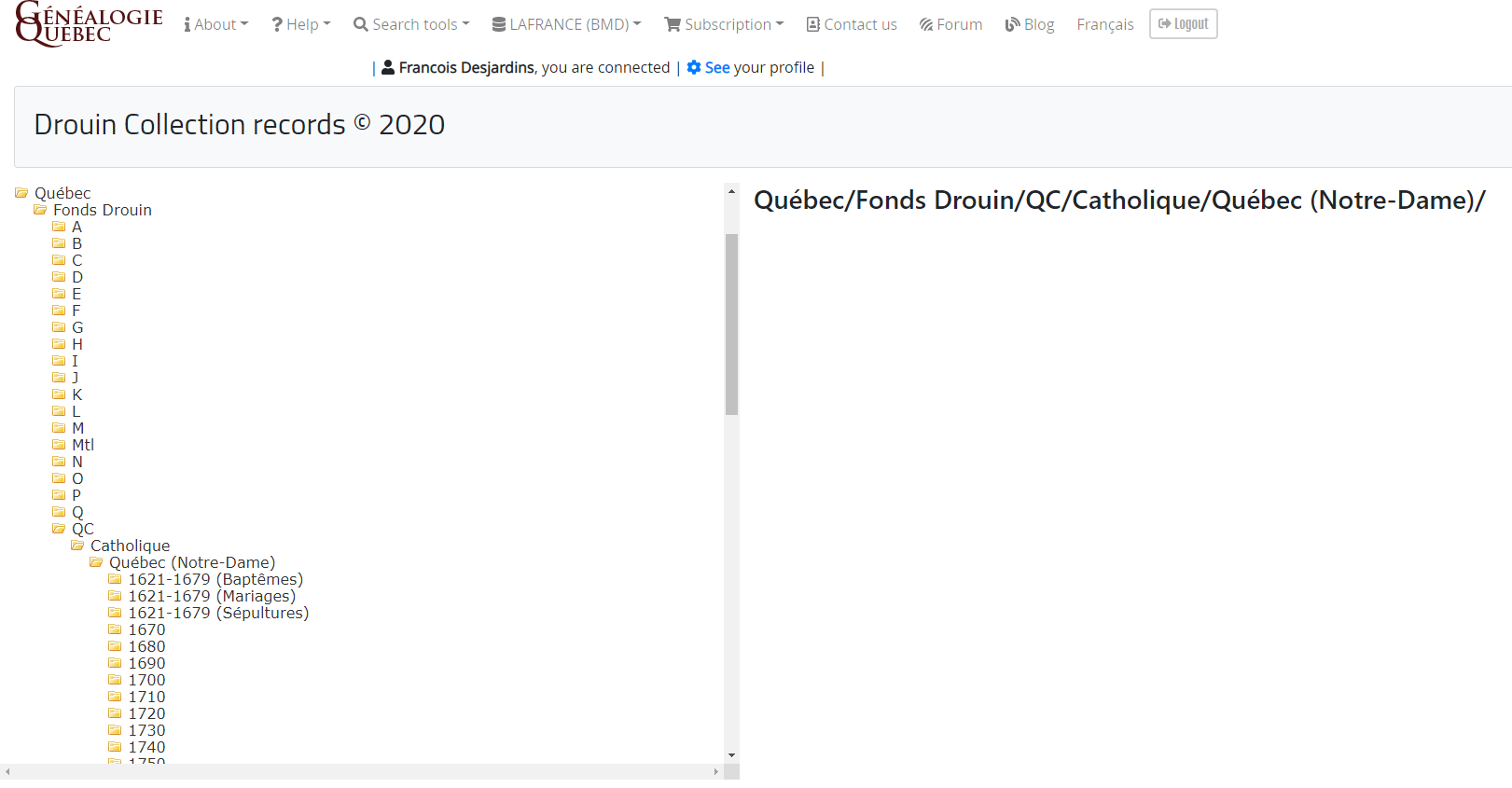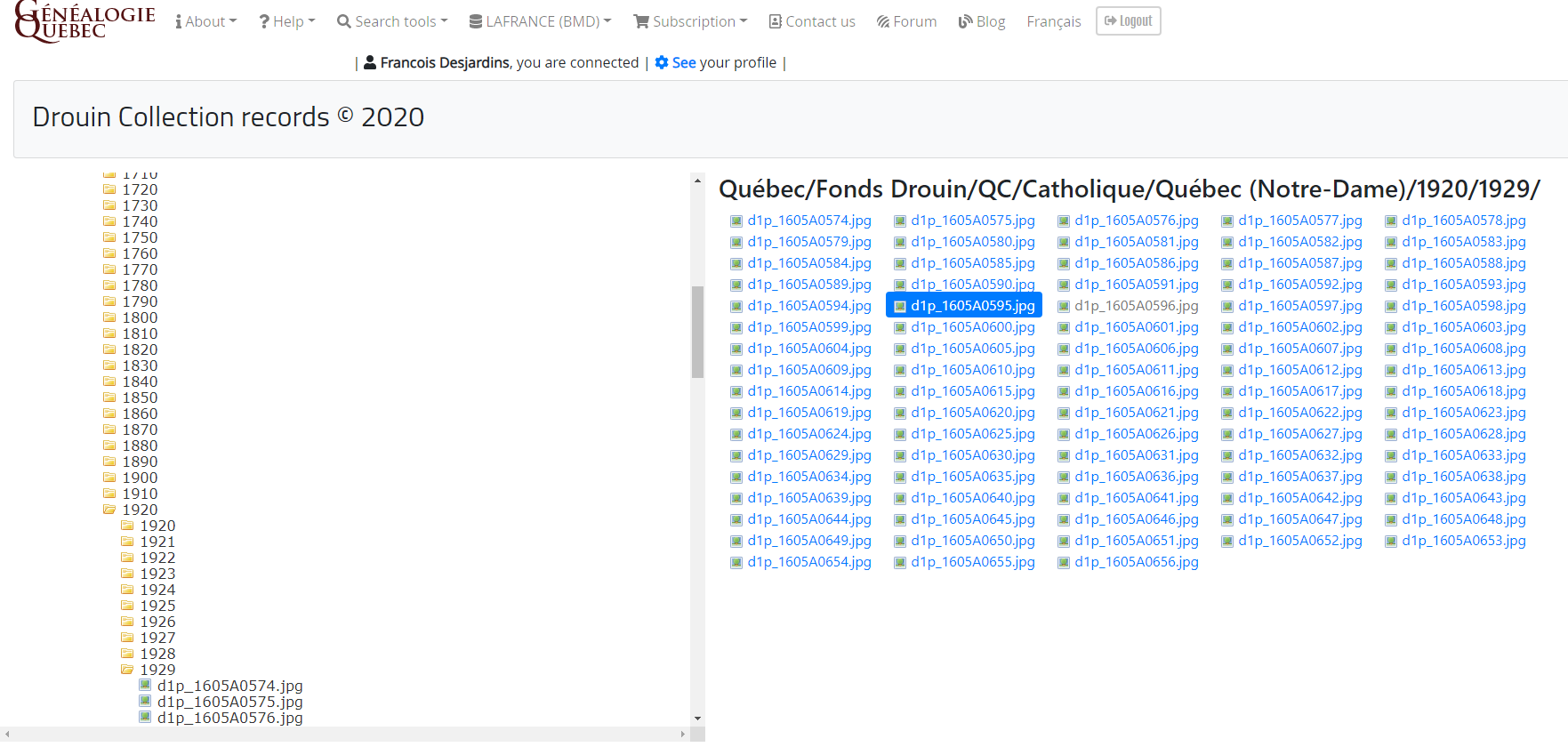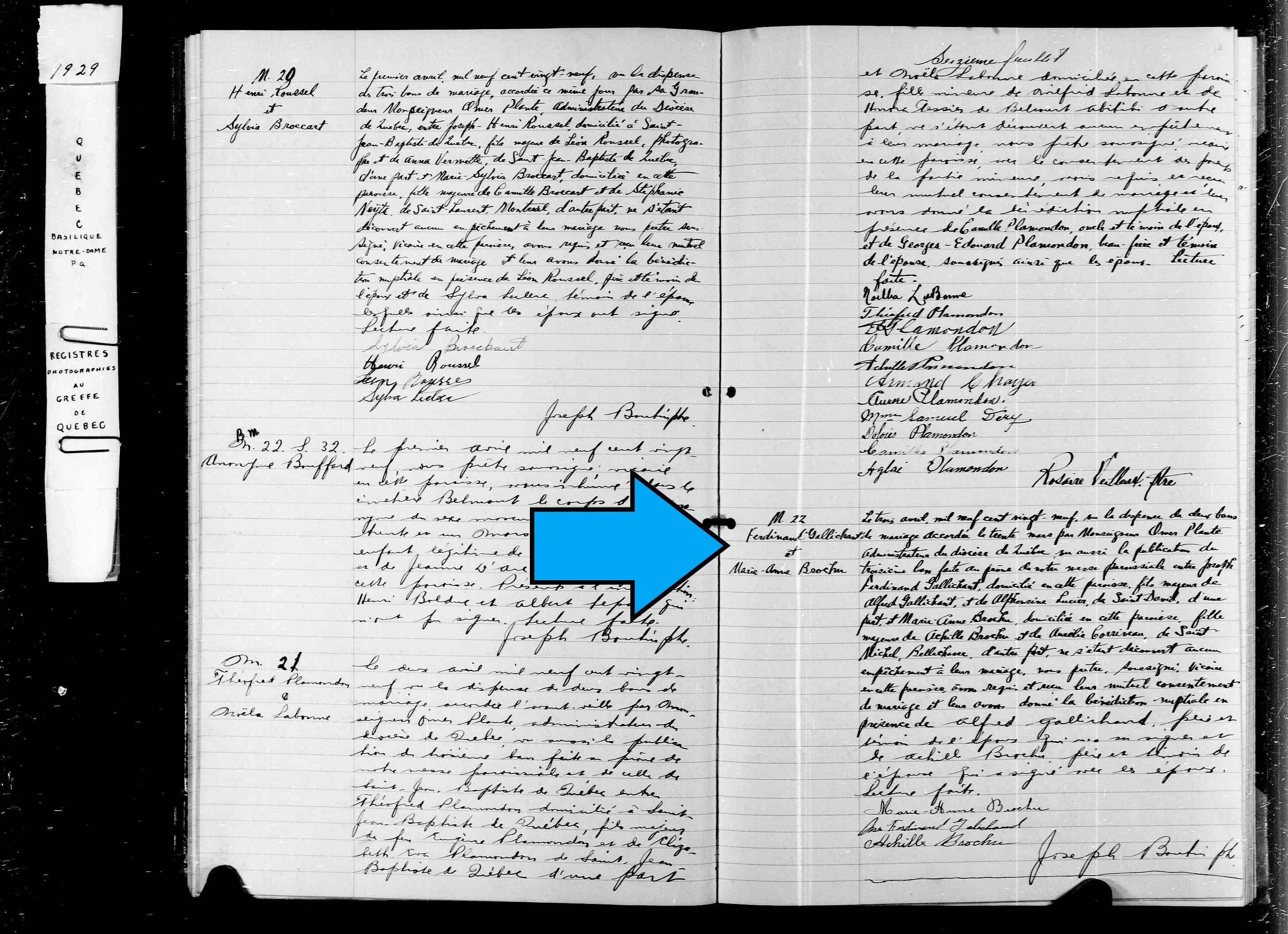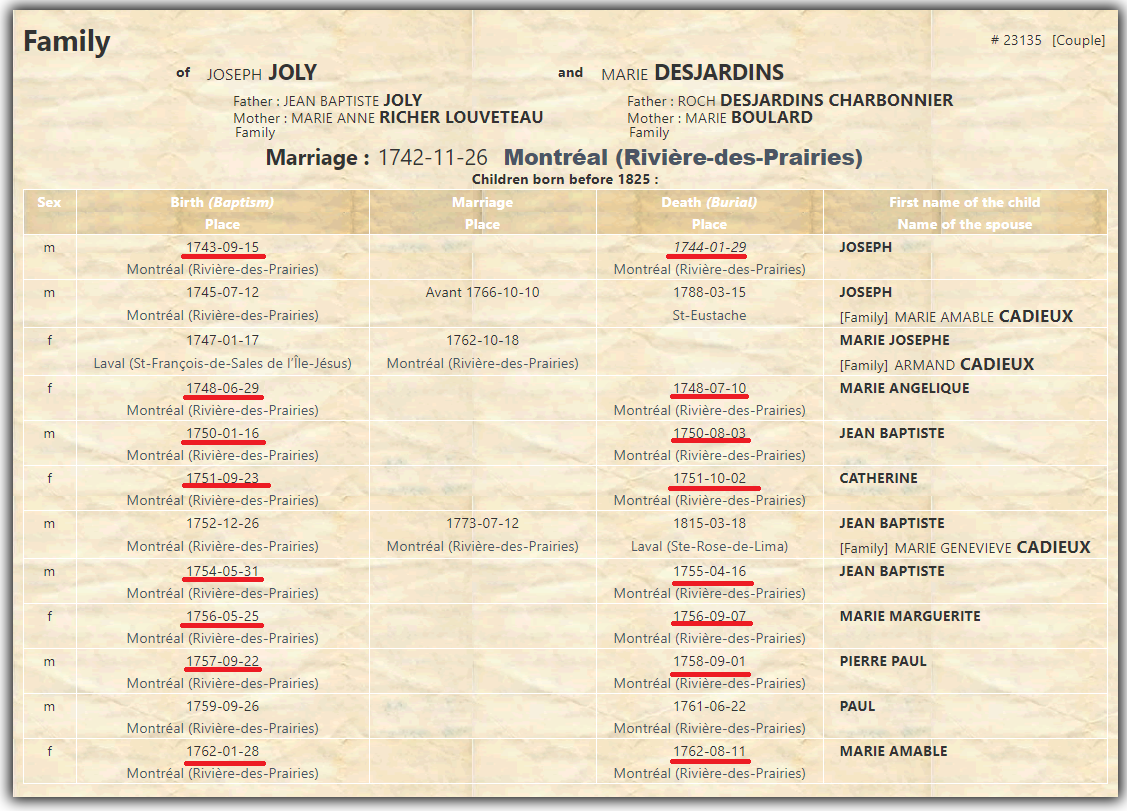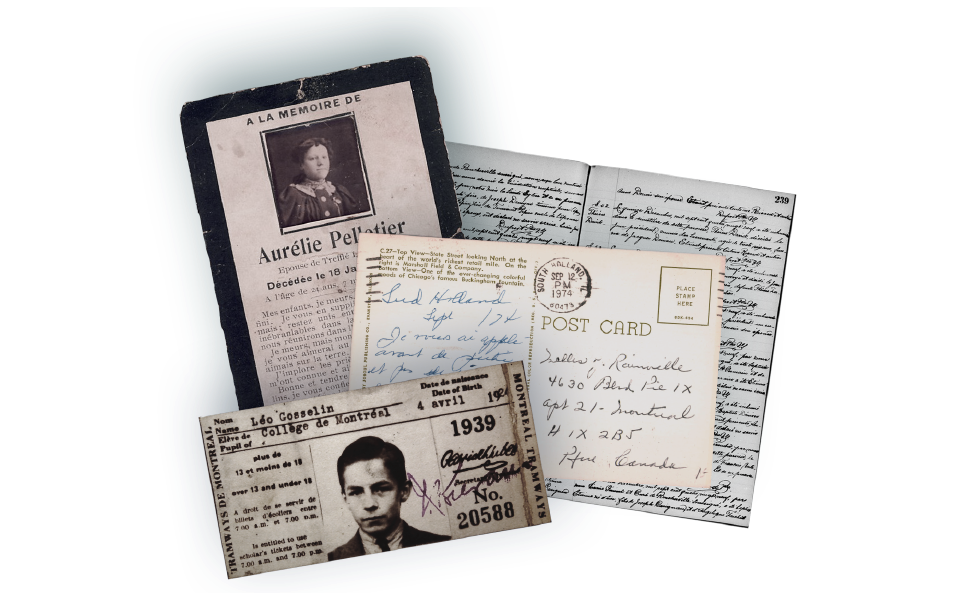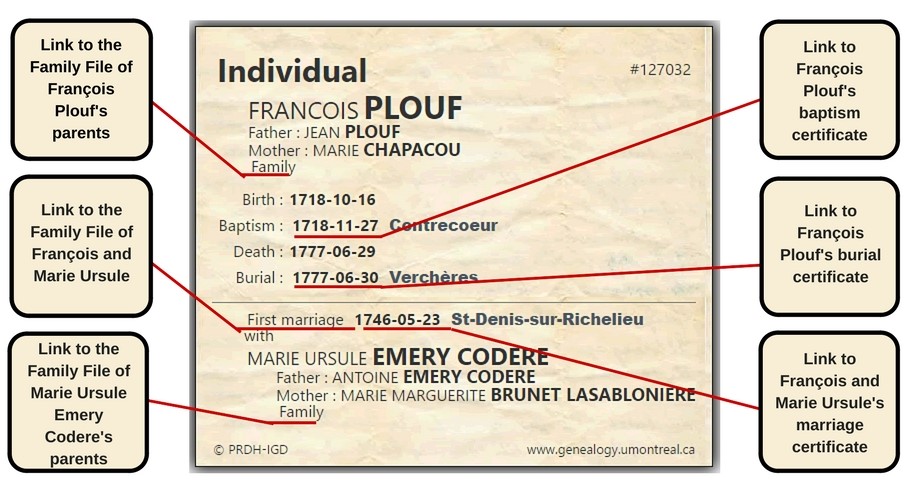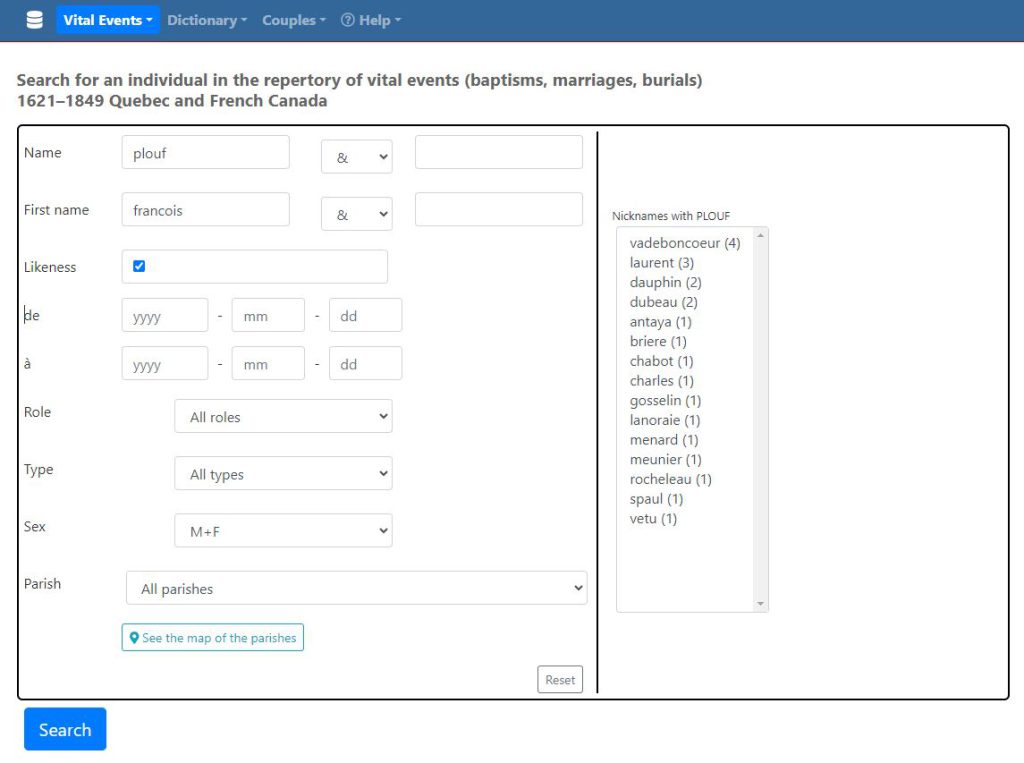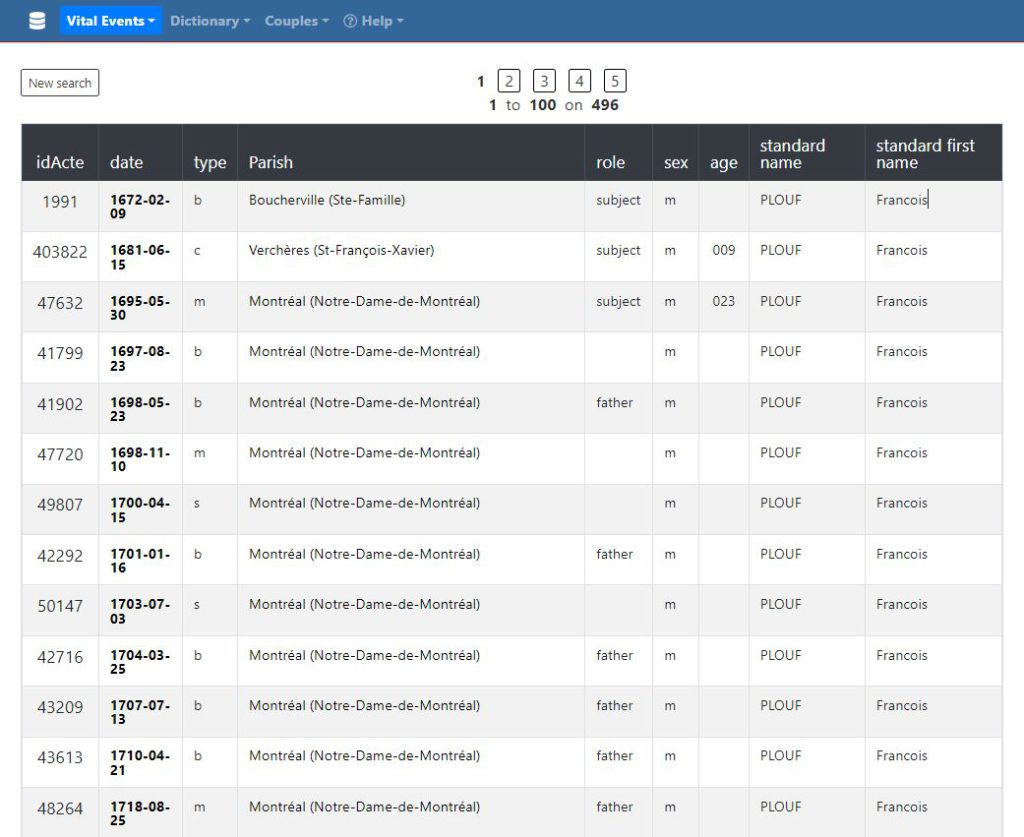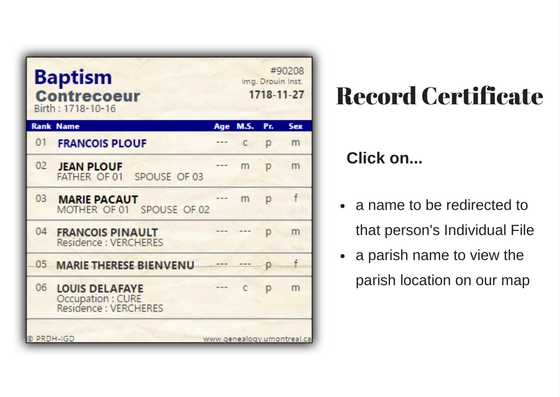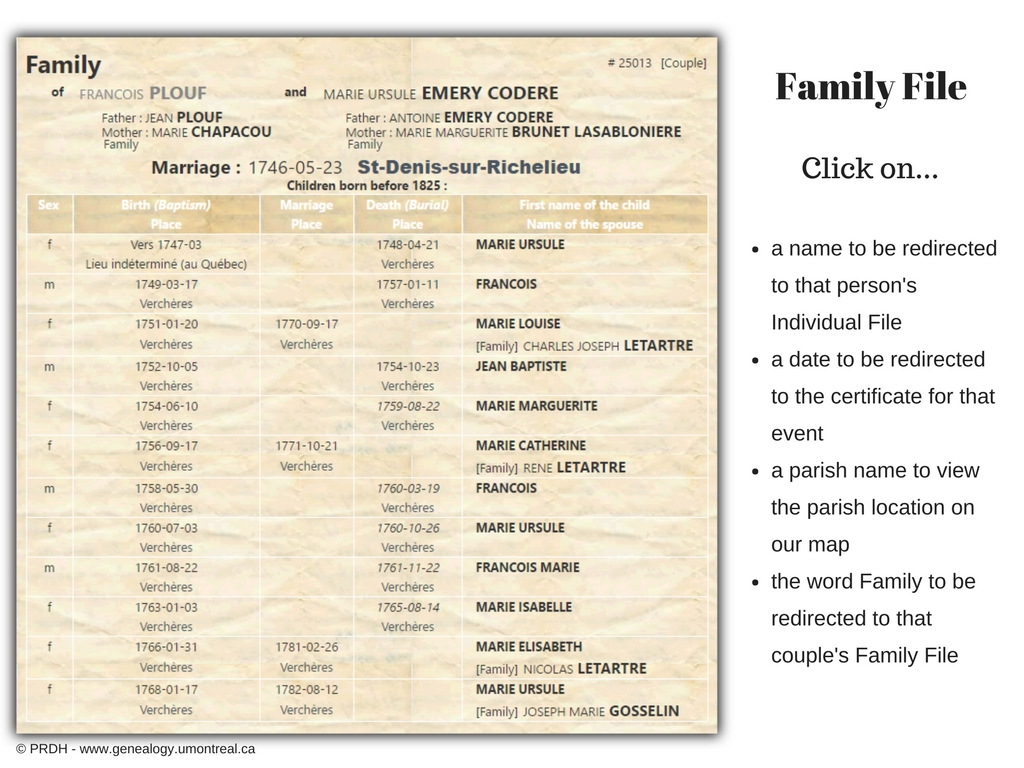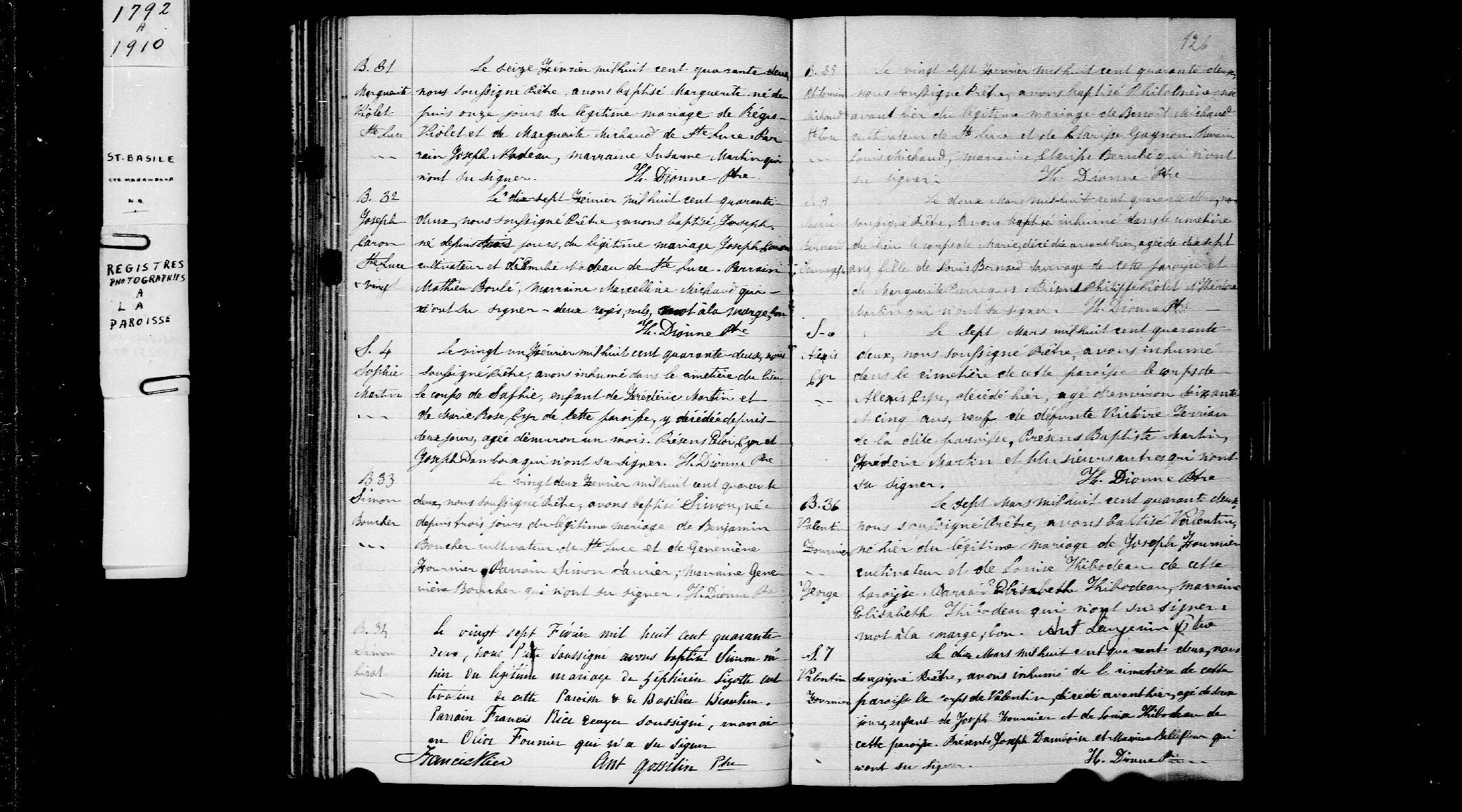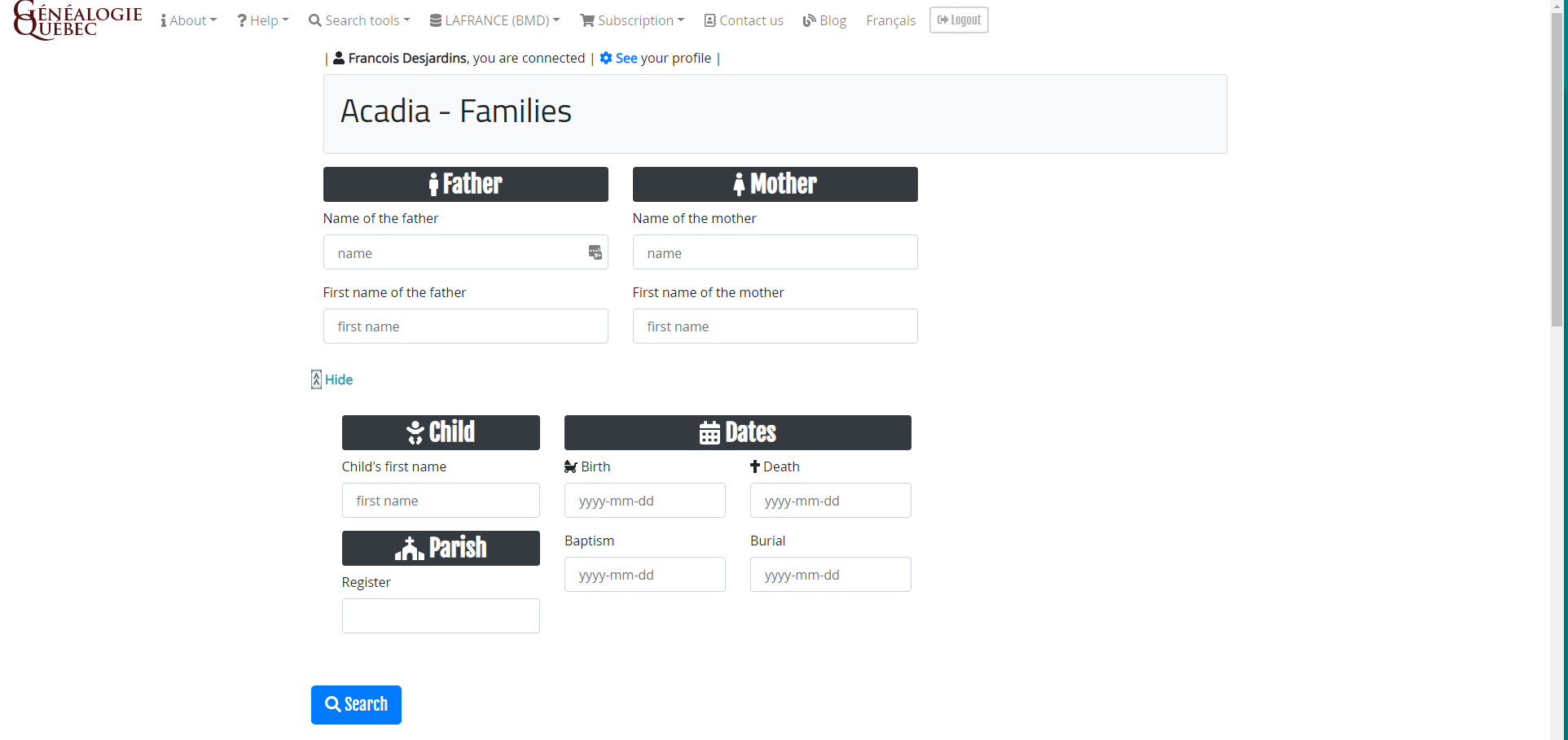⚠️ Note: This guide pertains to one of Genealogy Quebec’s legacy tools, which are no longer updated. Their content is now integrated into the new unified search engine.
The Drouin Institute’s Great Collections, one of 15 tools available to Genealogy Quebec subscribers, contains a digitized version of the Great Collections published and edited by the Drouin Institute over the course of its existence.
- Masculine (Men series): Alphabetical directory of all French-Canadian marriages from Quebec between 1760 and 1935, sorted by the groom’s surname.
- Féminine (Woman series): Alphabetical directory of all French-Canadian marriages from Quebec between 1760 and 1935, sorted by the bride’s surname.
- Histor: Directory of marriages files, including the origin of the subjects as well as a marriage contract. This collection covers all the Catholic and Protestant marriages celebrated in Quebec between 1730 and 1825, as well as marriages celebrated in Western French forts such as Détroit. Also contains Acadian marriages.
- Fiches Acadiennes (Acadian cards): This series contains 50 000 birth, marriage and death cards pertaining to Acadian individuals.
- Dossiers généalogiques Drouin: Contains the data collected before 1960 by Joseph and Gabriel Drouin in order to create their family genealogies.
- Affinités généalogiques Drouin: Complement to the Dossiers généalogiques Drouin, contains various genealogical and historical documents.
- Petit Drouin: Directory of all of Quebec’s Catholic marriages from 1760 to 1825.
- Kardex Noir: The Kardex Noir was the predecessor to La Masculine (Men Series). Its content is similar.
- Prévôté de Québec: Contains transcriptions of Prévôté de Québec hearings.
- DNCF: Contains the 4th book of the Dictionnaire national des Canadiens francais (Red Drouin)
- Patrimoine familial: This series presents the lives and genealogies of some famous or significant Quebec historical figures.
- Patrimoine national: Contains baptism, marriage and burial directories as well as some Quebec cemeteries, produced by various authors.
- Fiches franco-américaines (Franco-american cards): These cards contain an index of individuals who have been mentioned in the Guide Officiel Franco-Américain. The Guide Officiel Franco-Américain (GOFA) was a guide published annually in the United States that pertained to French-Americans. It contained short biographies of individuals with French roots living in the United States.
This tool can be browsed in two different ways.
Search by family in the Great Collections
The search by family in the Great Collections allows you to search for a surname in one or many of the following collections:
- La Masculine (Men Series)
- La Féminine (Women Series)
- Le Fichier Histor
- Dossiers généalogiques Drouin
- Fiches Acadiennes (Acadian cards)
- Petit Drouin
After searching for a surname, you will obtain a list of results that includes every page where this family name is mentioned in the above collections.
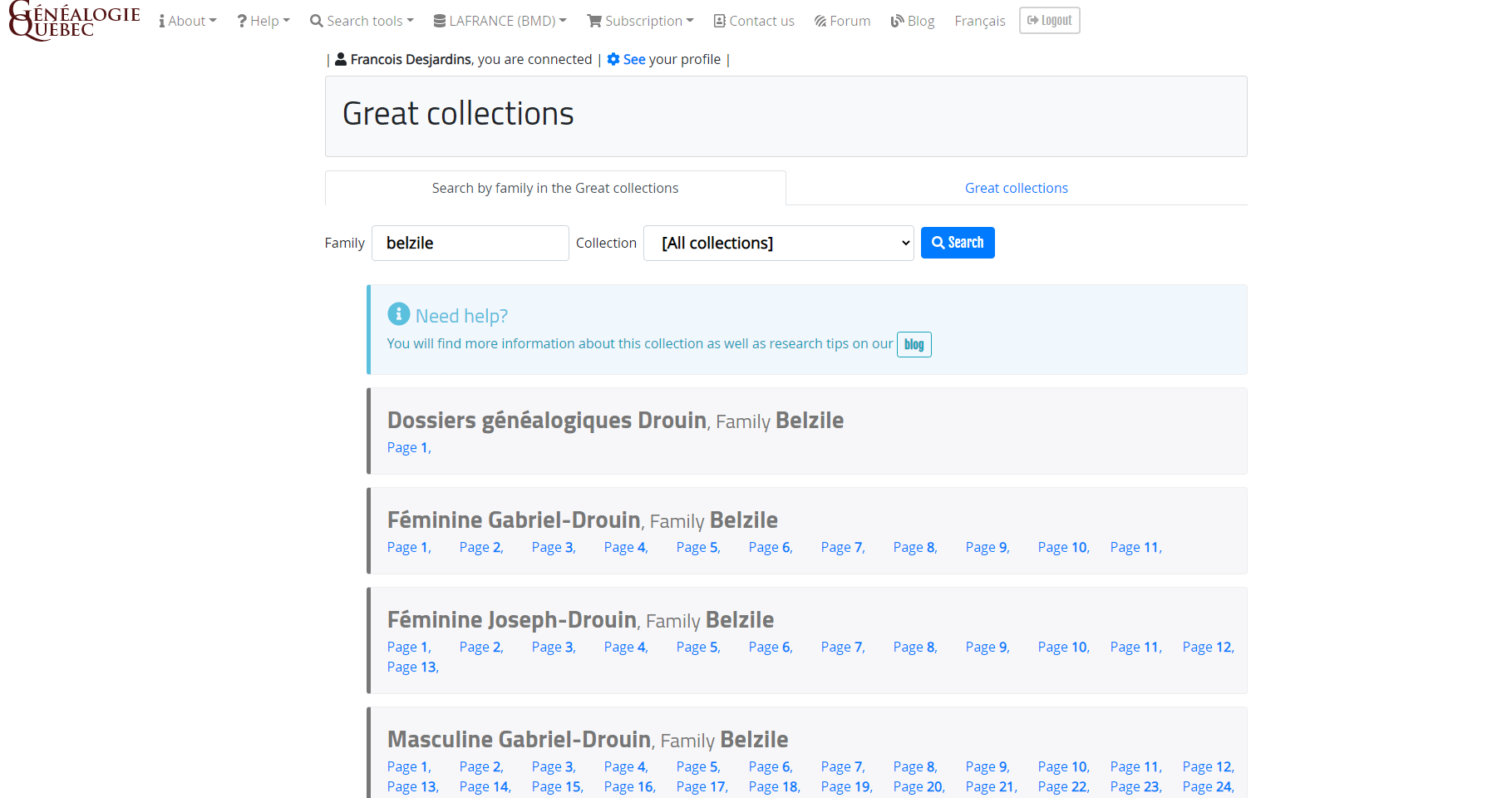
The results are presented in the same alphabetical order in which they appeared when the Great Collections were published as books, meaning that an individual whose first name begins with A will appear on the first few pages, while an individual named Zenophile should be found on the last pages.
Great Collections by folders
In this tab, the collections are organized within a file tree structure.
The collections can be browsed by navigating through the folders.
Some of the documents contained in these collections, namely the Men and Women series, aren’t particularly intuitive for a novice user.
Here is a schema explaining how to interpret the documents from these two collections:
Buying a physical copy of the Drouin Great Collections
Physical book versions of the Great Collections can still be purchased to this day. They are mainly intended for genealogical societies and libraries but are also available to private individuals.
Please note that we are now offering significant discounts on the Great Collection books. To inquire about the discounts, please write to us at contact@institutdrouin.com.
Finding the original church records referenced in the Men and Women series
Your subscription to Genealogy Quebec gives you access to the Drouin Collection Records, which contain all of Quebec’s parish registers from 1621 to the 1940s as well as many parish registers from Ontario, Acadia and the Northeast of the United States.
Every marriage referenced in the Men and Women series refers to an original parish document; it is therefore possible, in most cases, to find the original document from the information contained in the Men and Women Series.
To illustrate the process of finding an original document, we will use Ferdinand Gallichant and Marie-Anne Brochu’s marriage.
- galichaut – Groom’s last name
- joseph-ferdinand – Groom’s first name
- brochu – Bride’s last name
- m.-anne – Bride’s first name
- n.-d.-québec – Parish where the marriage was recorded
- 3 avril 1929 – Date of marriage
The Men Series entry for this marriage indicates that it was celebrated on the 3rd of April 1929 in the Notre-Dame de Québec parish.
To browse this register, we must first make our way to the Drouin Collection Records.
Once in the Drouin Collection Records, you will notice that the various registers are organized in a file tree structure. We begin by opening the Quebec folder, as the marriage we are interested in was recorded in that province.
It is under the Fonds Drouin folder that you will find all of Quebec’s parish registers from 1621 to 1940, sorted by alphabetical order.
We must now find the Notre-Dame-de-Québec register folder.
Some parishes are listed under the name of the city they are in, while others will be listed under the name of the parish itself. All of Quebec City’s parishes can be found under the “QC” folder, listed according to their religious denomination.
As Notre-Dame-de-Québec is a Catholic parish, it will be found under the “catholique” folder.
Once inside the folder, we must navigate to the correct year, which will give us access to all the images associated with the register for that specific year. It is important to know that in general, the images are listed in chronological order within a folder.
This means that the first image in the folder will contain the first events recorded during that year, which are usually the ones from January. Similarly, the last few images in the folder will hold the records from the end of the year.
As Ferdinand Gallichant and Marie-Anne Brochu’s marriage was celebrated in April, the 4th month of the year, our consultation of the register should begin within the first third of the list of images.
And so, we were able to find the original document pertaining to a Men Series entry using the tools available on GenealogyQuebec.com.
Useful links
Buying physical copies of the Drouin Great Collections (write to us at contact@institutdrouin.com)
